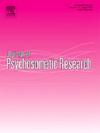Lifestyle factors, metabolic syndrome and apolipoprotein E in monozygotic twins with, at risk of and without affective disorders, as predictors of onset or recurrence of affective episodes, a seven-years follow-up study
IF 3.3
2区 医学
Q2 PSYCHIATRY
引用次数: 0
Abstract
Introduction
This study explores lifestyle factors, metabolic syndrome (MetS), apolipoprotein E genotype (APOE), and plasma concentrations of apoE as predictors for the onset and recurrence of affective disorders.
Methods
We examined these factors in a seven-year follow-up study of 201 monozygotic twins (MZ) with unipolar or bipolar disorder (affected), their unaffected co-twins (high-risk), and twins with no personal or familial risk of affective disorder (low-risk).
Results
Higher body mass index (hazard ratio (HR) = 1.29, 95 % CI 1.11–1.50) and higher apoE plasma concentrations (HR = 1.09, 95 % CI 1.02–1.17) were significant predictors of onset. The APOE genotypes ε22 (HR = 2.85, 95 % CI 1.52–5.36) and ε43 + ε44 (HR = 2.42, 95 % CI 1.42–4.11) were predictors of onset or recurrence in the total sample. The ε22 genotype increased the HR = 5.04(95 % CI 2.25–11.31) in the affected group, while ε43 + ε44 genotypes predicted onset in the high-risk group (HR = 7.42, 95 % CI 1.76–31.36). Smoking was a predictor of onset or recurrence of affective episodes in the overall sample (HR = 2.15, 95 % CI 1.24–3.74) and in the low-risk group (HR = 39.10, 95 % CI 2.75–555.33).
Conclusions
The established risk genotypes APOE ε43 and ε44 were linked to the onset and recurrence of affective disorders in both affected and high-risk twins. Body mass index and smoking also emerged as significant risk factors. Furthermore, the predictors investigated may demonstrate different trajectories depending on familial risk for affective disorders. Overall, these findings underscore the importance of incorporating both biomarkers of and lifestyle factors into the prevention and treatment of patients with affective disorders.
生活方式因素、代谢综合征和载脂蛋白E在有、有风险和无情感性疾病的同卵双胞胎中作为情感性发作或复发的预测因素,一项为期7年的随访研究
本研究探讨了生活方式因素、代谢综合征(MetS)、载脂蛋白E基因型(APOE)和载脂蛋白E血浆浓度作为情感性疾病发病和复发的预测因子。方法我们对201例患有单极或双相情感障碍的同卵双胞胎(MZ)(受影响)、未受影响的同卵双胞胎(高风险)和没有个人或家族情感障碍风险的双胞胎(低风险)进行了为期7年的随访研究,检查了这些因素。结果较高的体质指数(HR = 1.29, 95% CI 1.11 ~ 1.50)和较高的apoE血浆浓度(HR = 1.09, 95% CI 1.02 ~ 1.17)是发病的显著预测因素。APOE基因型ε22 (HR = 2.85, 95% CI 1.52 ~ 5.36)和ε43 + ε44 (HR = 2.42, 95% CI 1.42 ~ 4.11)是总样本中发病或复发的预测因子。ε22基因型预测影响组发病的HR = 5.04(95% CI 2.25 ~ 11.31),而ε43 + ε44基因型预测高危组发病的HR = 7.42 (95% CI 1.76 ~ 31.36)。吸烟是整个样本(HR = 2.15, 95% CI 1.24-3.74)和低风险组(HR = 39.10, 95% CI 2.75-555.33)的发病或复发的预测因子。结论已确定的风险基因型APOE ε43和ε44与患病和高危双胞胎情感性障碍的发生和复发有关。体重指数和吸烟也成为重要的风险因素。此外,所调查的预测因子可能显示出不同的轨迹,这取决于情感障碍的家族风险。总的来说,这些发现强调了将生物标志物和生活方式因素结合到情感性障碍患者的预防和治疗中的重要性。
本文章由计算机程序翻译,如有差异,请以英文原文为准。
求助全文
约1分钟内获得全文
求助全文
来源期刊
CiteScore
7.40
自引率
6.40%
发文量
314
审稿时长
6.2 weeks
期刊介绍:
The Journal of Psychosomatic Research is a multidisciplinary research journal covering all aspects of the relationships between psychology and medicine. The scope is broad and ranges from basic human biological and psychological research to evaluations of treatment and services. Papers will normally be concerned with illness or patients rather than studies of healthy populations. Studies concerning special populations, such as the elderly and children and adolescents, are welcome. In addition to peer-reviewed original papers, the journal publishes editorials, reviews, and other papers related to the journal''s aims.

 求助内容:
求助内容: 应助结果提醒方式:
应助结果提醒方式:


